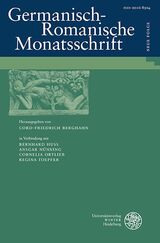Autor: Martin Stern
- «
- 1
- »
Die Suche erzielte 3 Treffer.
„Wege dorthin“ Beitrag
Intertextualität und Sinnkonstitution in Paul Celans Gedicht À LA POINTE ACÉRÉE
Ein ungelöstes Rätsel in Annette von Droste-Hülshoffs spätem Gedicht ‚Durchwachte Nacht’ Beitrag
- «
- 1
- »
